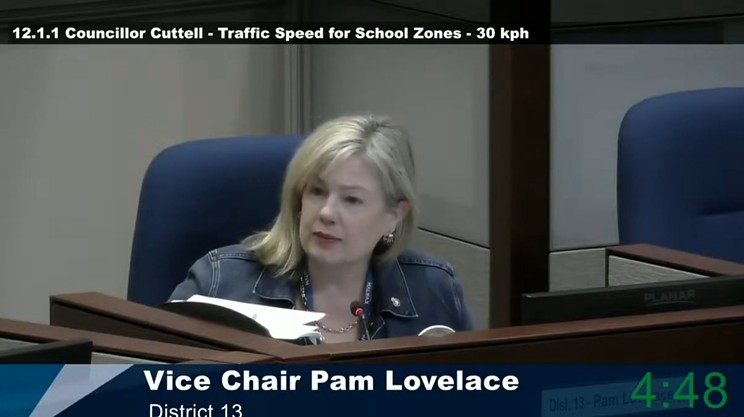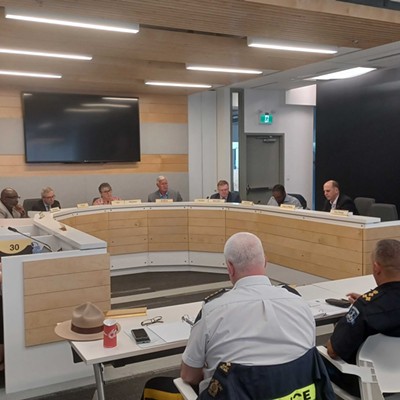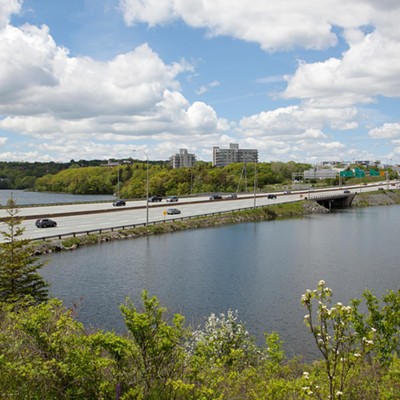On April 25, 2024, Halifax’s Transportation Standing Committee deferred the decision to make a mistake. The Halifax Regional Municipality Road Safety Strategy was on the agenda. Halifax’s new tactical plan to decrease road violence. If passed as written, it will replace the HRM’s 2018 strategic plan to decrease road violence.
After a brief update from Halifax Transit and its third-quarter performance (it’s doing okay, overloads are still an issue) the discussion switched to the new Road Safety Framework and specifically, the plan's vision, goal and section 4.1 that claims this new strategy is evidence-based.
Peter Zimmer, a member of the Halifax Cycling Coalition and one of the municipal stakeholders who was supposed to be consulted for this plan, asked the committee to defer a decision on this plan in the (likely vain) hope that city staff would reconsider the goal of this new strategy after more consultations with stakeholders like Zimmer.
The issue is that although this new strategic plan’s long-term goal is “to achieve zero fatalities and serious injuries for all road users in the Halifax Regional Municipality by 2038,” the city plans to achieve this goal in the short term by maintaining “a downward trend in the rate of fatal and serious injury collisions per 100,000 residents.”
For those who don’t understand why having an absolute goal and measuring progress per capita is self-defeating, it’s like measuring in inches and cutting in centimetres. If the city’s goal is zero, then its plan to get there can’t allow an increase in road violence to be labelled a success just because the amount of violence increased overall, but slower than our population growth.
On top of being able to achieve the short-term goal while getting farther away from the long-term goal, Halifax’s road injury stats are underreported. This means that having a goal that measures per capita trends as success is accepting and allowing an unknown level of unrecorded violence to continue unabated. In response to the risk posed by HRM’s under-reported stats the city’s director of traffic management, Lucas Pitts said “it's important to remember that Vision Zero is actually serious injury and fatalities it's not injury and fatalities. I don't doubt that it's under-reported, I don't doubt that some people get hit and have a fairly serious concussion but don't realize it, go home, have symptoms and end up in the hospital. I don't doubt that's happening at all.” But also that he’s “not sure that impact is that big because again it is serious injury” or fatalities that Halifax is trying to prevent.
Zimmer, the HCC member who spoke at the meeting is one of those under-reported injuries. While riding his bike, he was hit by a car and taken to the hospital by ambulance. On top of minor injuries, like a cut on his pinky that required stitches, he also broke his collarbone. A person who spoke to the Coast and got injured in a crash in February at the intersection of Portland Street and Eisnor Road lost a week’s worth of wages due to injuries sustained in his collision. Good news for these two residents, Pitts says your injuries weren’t serious, and your pain and suffering don’t need to be prevented in the HRM’s road safety strategy because “again, it is serious injury” that we care about preventing.
At its core, the main issue with the new road safety framework is not that it’s a bad plan. It’s an okay plan. It will likely reduce injuries on HRM’s roads, but it will only do so within the confines of our current status quo. It will not be successful in achieving zero preventable fatalities on publicly funded infrastructure in the HRM. Because in spite of what section 4.1 of this new plan strategy claims, we do not live in a city that uses evidence in transportation planning.
The failures of this new road safety framework started with the failure of the 2018 strategic plan on Oct. 26, 2023.
In July of 2018 the HRM adopted a very good strategic plan for road safety called the Strategic Road Safety Framework. The first sentence of that plan is “any loss of life on our roads is unacceptable,” and it only gets better from there. In the old plan city staff laid out that people make mistakes and making a mistake should not be fatal for yourself or someone else when using publicly funded transportation infrastructure.
Simplistically speaking there are two main ways to prevent mistakes made by dangerous road users (aka drivers of cars) from becoming fatal. The first is to prevent car trips from happening in the first place. With fewer drivers on the roads, fewer naturally occurring opportunities exist for drivers to make fatal mistakes. For example, a policy to reduce car trips would be raising parking fees. This would provide economic incentives for dangerous road users to become safer road users and consider taking the bus or riding a bike as a cheaper, safer, transportation alternative. Alternatively, the city could build out safe non-driving transportation infrastructure. When a cheaper transportation option, like biking, becomes a safe way to move around, more people will use it. As a result, there would be fewer car trips, which means fewer trips with the potential for fatal violence. Thanks to the magic that is the math behind probabilistic outcomes, this also would lead to safer streets.
This leads to the second main way to prevent dangerous road users' mistakes from becoming fatal: to prevent dangerous road users from hitting other road users. This is best achieved using physical infrastructure, either high-cost, high-tech infrastructure like redesigning intersections or low-cost, low-tech infrastructure like bollards.
Before getting into how exactly the HRM fails to use evidence in its “evidence-based” strategic plans, it is also worth pointing out that there is overwhelming evidence to say that making transportation safer by doing the above would also help Halifax achieve most of its other long term strategic goals.
Halifax has a strategic priority to keep roads well maintained. How can the city make road maintenance cheaper and easier? Decrease the workload of our streets by decreasing the amount of car traffic.
Halifax's strategic priorities are achieving a modal shift (aka getting people out of cars) and changing the “culture of driving” (aka getting people out of cars) in the HRM. Also a goal of HalifACT is to reduce our carbon impact on the planet. In Canada 22% of our carbon is “transportation emissions,” and most of that pollution is us driving everywhere we go. Or as the Canadian government deceptively and euphemistically puts it: “Most of these [transportation] emissions (over 84%) are attributed to surface transportation modes (including light-duty vehicles, freight trucking, and rail).” And the reason it’s deceptive is that light-duty vehicles are the pickup trucks and SUVs on our roads and the yellow line in the graph below.
Anyways, ignoring the fact that decreasing automotive traffic on our streets would also help the HRM achieve a whole slew of other strategic goals, the original 2018 framework also included this direction to staff:
Ensuring that existing countermeasure programs are effective, aligning these measures with the emphasis areas and adjusting them, if required – Do Different
Last year, when presented with irrefutable evidence our chosen countermeasures would not successfully meet the goal of the 2018 framework of reducing fatal and injury collisions by 20%, we did not choose to use evidence to Do Different and stick to the whole “any loss of life on our roads is unacceptable” thing. Staff instead recommended that we Do More Of The Same and lower our safety standards so that loss of life on our roads is acceptable as long as injuries and fatalities trend downwards on a per capita basis.
During Thursday's meeting municipal staff and councillors Waye Mason and Shawn Cleary argued that this plan is good because it will reduce road violence. This new road safety framework puts a lot of emphasis on how to adapt our current transportation network to mitigate as much of the violence of car-based transportation as we can. If implemented as is, this plan will likely be successful in the minor mitigation of road violence that staff recommend we strive for. As a result, we will likely see a drop or reduction in per capita injuries and deaths with this new plan.
However, this new plan does not fundamentally address or try to prevent the inherent danger baked into car-based transportation. And why would it need to? Even though the city’s vision is to change our transportation system to remove this danger, we’ve decided to ignore the evidence saying what we’ve been doing isn’t working. Instead of changing our city, we’ve changed our short-term goals to accommodate the inherent violence of automotive transportation on publicly funded infrastructure.
That’s why this new road safety framework, as currently written, is a failure of good governance.
The good news is that the Transportation Standing Committee deferred this plan, so staff can get more feedback from stakeholders and fix these failures before presenting it again to the committee for consideration.

















